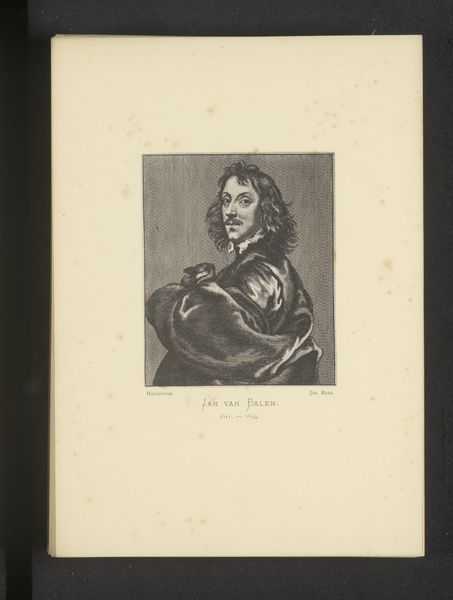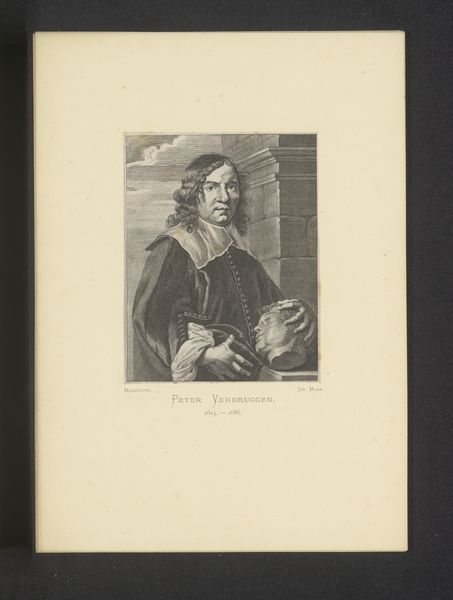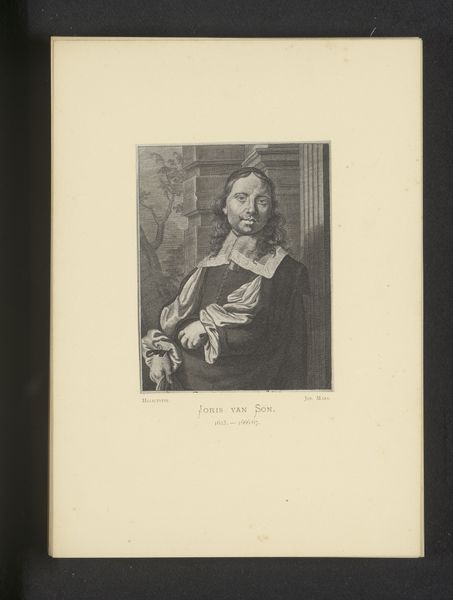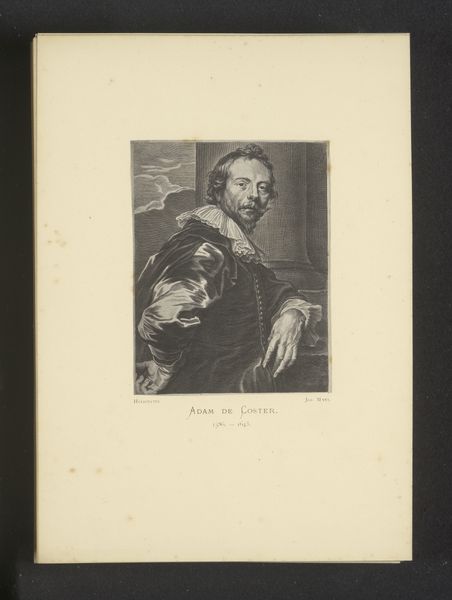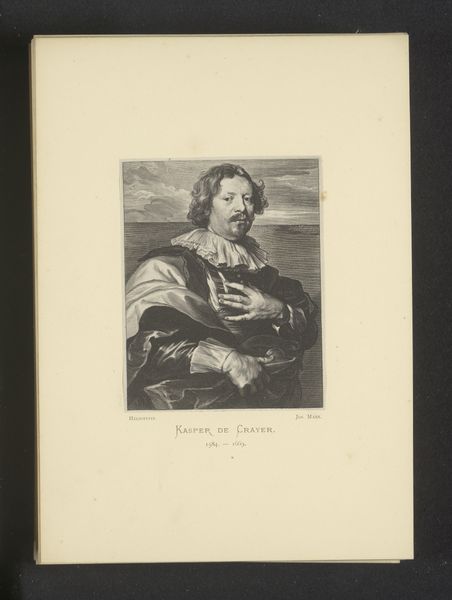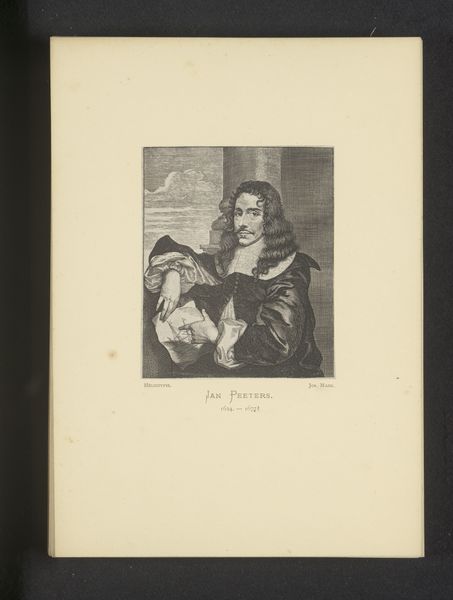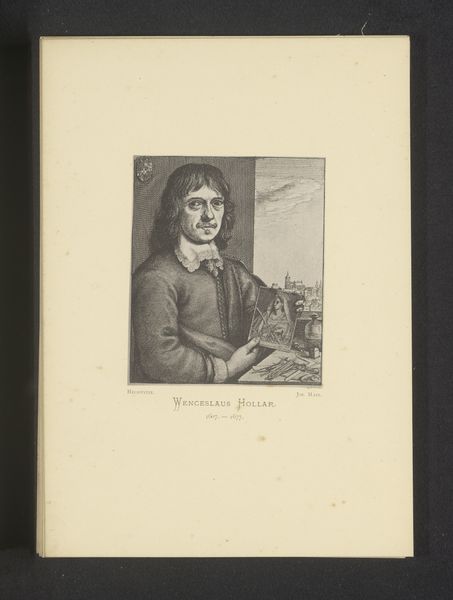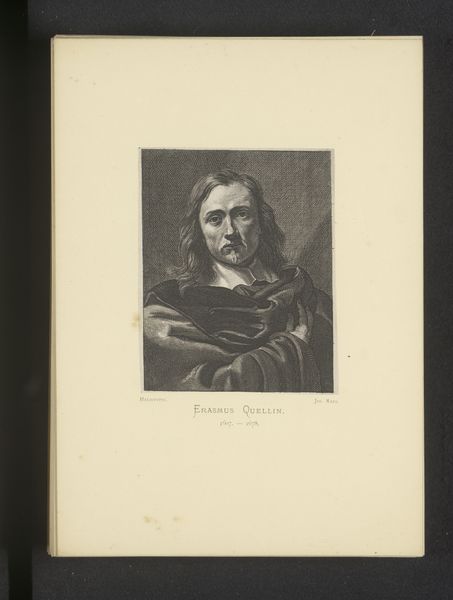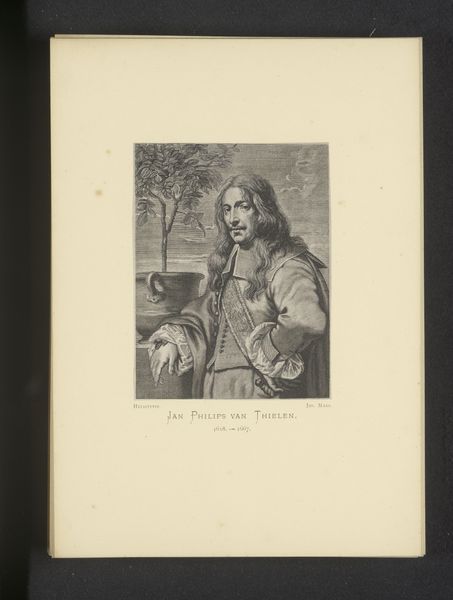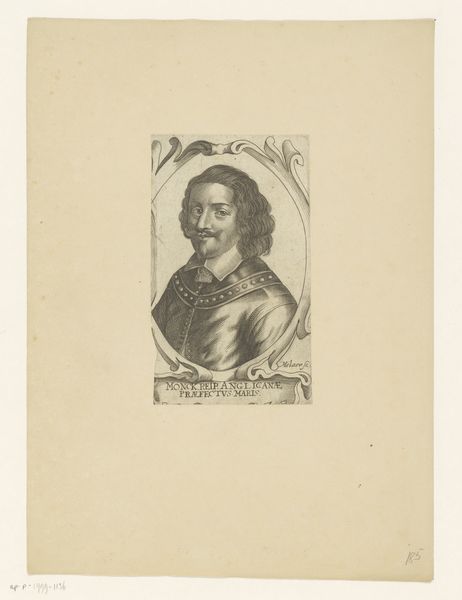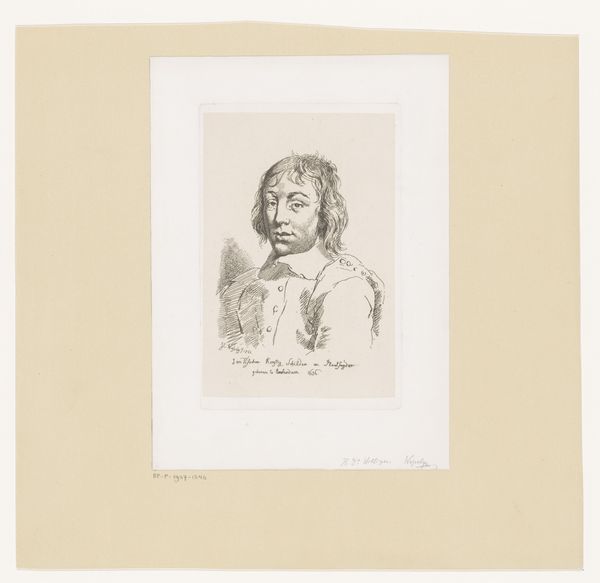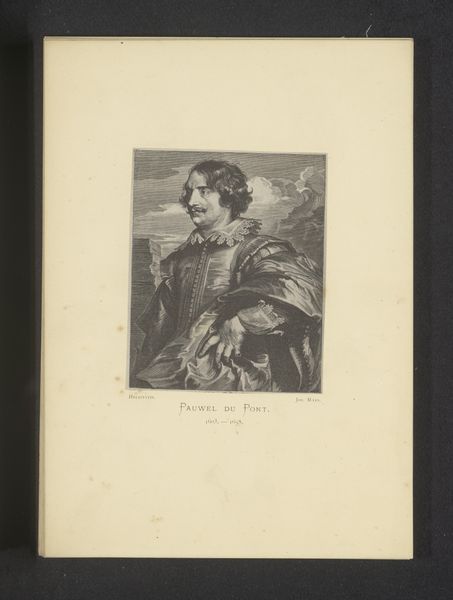
Reproductie van een ets van een portret van Frans van den Wijngaerde door Wenceslaus Hollar before 1877
0:00
0:00
Dimensions: height 101 mm, width 88 mm
Copyright: Rijks Museum: Open Domain
Curator: Before us, we have a reproduction of an etching, a portrait of Frans van den Wijngaerde by Wenceslaus Hollar, made before 1877. The print appears to be after the original. Editor: It strikes me as having a rather wistful quality. The subject's gaze, his slightly melancholic expression, set against that cityscape...there's a real sense of introspection captured. The sharp line work is so detailed. Curator: Indeed, note the semiotic elements within the composition. We see a convergence of texture and tone. Observe how the artist has rendered the texture of the subject’s doublet using short, controlled strokes that provide visual and textural contrast to the smoothed skin. Editor: Focusing on historical contexts, the act of reproducing art like this speaks volumes about the circulation and consumption of images in the 19th century. This print makes art accessible, democratic, it pulls art out of the gallery and into peoples homes. Curator: I agree. And in this print's linear precision, the artist encapsulates both physical resemblance and a representation of an idea. Consider the meticulous handling of line and contrast which evokes clarity through subtle differences. The cityscape outside the window offers compositional contrast by mirroring the complex folds of his hair. Editor: Absolutely. The print’s existence also points to how the past gets remembered or re-imagined by later eras. This isn't just about the man, Frans van den Wijngaerde, it's also about a deliberate connection that later audiences feel with a past figure, or era. Curator: One can explore how Hollar deployed the print medium for disseminating social or cultural information. The choice of using etched lines builds and defines three-dimensionality, resulting in the final print. It brings into the present a subject who no longer exists except in memory. Editor: Ultimately, viewing this print invites us to explore art as something alive. Something active in how culture forms its sense of continuity over time, echoing past forms in present aesthetics. Curator: Precisely. The piece’s semiotic clarity makes for a striking encapsulation of subject through an art form with clear visual strategies. Editor: I find it compelling how a small etching reproduction, carries all this weight of history.
Comments
No comments
Be the first to comment and join the conversation on the ultimate creative platform.
